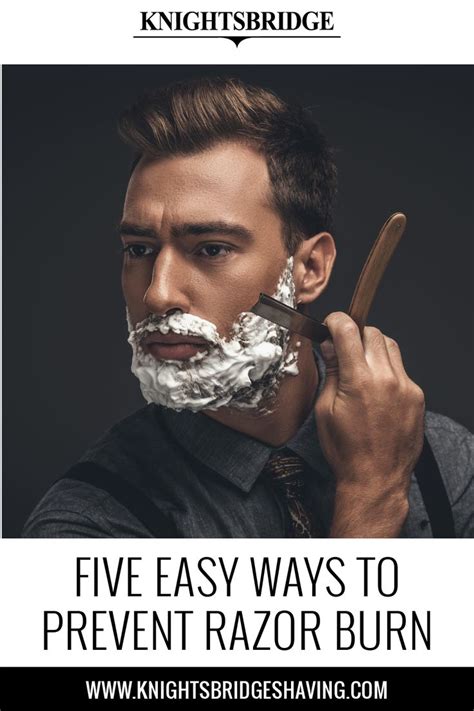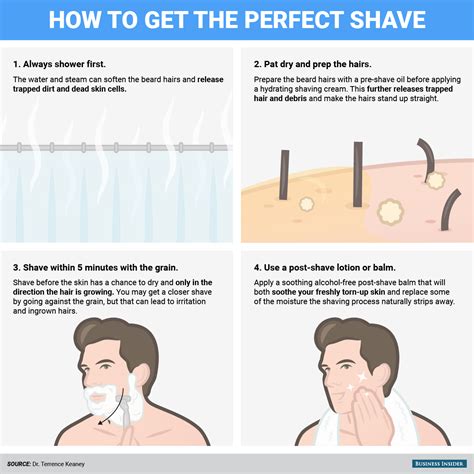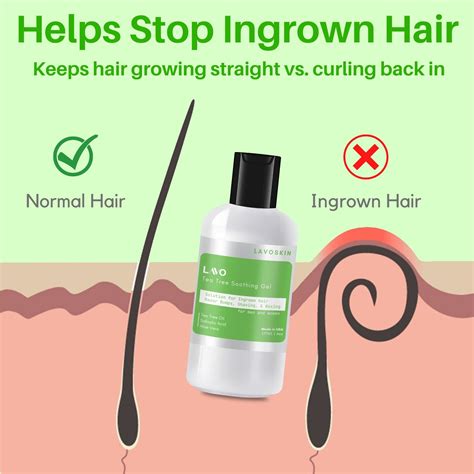Prevent razor burn & ingrowns for a sharp, peak performance appearance?

Mastering the Shave: A Guide to Preventing Razor Burn and Ingrown Hairs
A crisp, clean-shaven look projects confidence and professionalism, essential for anyone aiming for a peak performance appearance. Yet, the pursuit of this polished look is often undermined by common shaving irritations: razor burn and painful ingrown hairs. These nuisances can detract significantly from your aesthetic, causing discomfort and marring your skin. The good news? With the right techniques and a consistent routine, you can banish these issues and achieve the smooth, irritation-free shave you deserve.
1. Pre-Shave Preparation: The Foundation of a Flawless Shave
The secret to a great shave begins long before the blade touches your skin. Proper preparation softens your beard, opens pores, and creates an optimal surface for shaving, significantly reducing friction and irritation.
- Warm Up Your Skin: Shave after a warm shower or by applying a hot towel to your face for a few minutes. This softens the hair follicles and relaxes the skin.
- Exfoliate Gently: Use a mild facial scrub 2-3 times a week to remove dead skin cells. This helps to lift hairs away from the skin, preventing them from curling back and becoming ingrown.
- Pre-Shave Oil: A quality pre-shave oil creates a protective barrier between your skin and the blade, enhancing glide and reducing tugging.
- Lather Up: Use a rich, moisturizing shave cream or gel. Apply it generously and let it sit for a minute or two to further soften the beard.

2. The Art of the Shave: Technique Matters Most
Your shaving technique is paramount in preventing razor burn and ingrown hairs. Hasty or incorrect methods are often the root cause of these issues.
- Sharp Blade is Non-Negotiable: A dull blade drags and pulls, leading to irritation. Replace your razor blade or cartridge every 5-7 shaves, or sooner if you feel any tugging.
- Shave With the Grain (Initially): For most people, shaving in the direction of hair growth on your first pass is the best way to prevent irritation and ingrowns. If you need a closer shave, re-lather and try shaving across the grain, but never against it if you’re prone to ingrowns.
- Light Pressure: Let the razor do the work. Pressing too hard causes cuts, nicks, and exacerbates razor burn. A good razor should glide effortlessly.
- Rinse Frequently: Rinse your blade under hot water after every few strokes to clear away hair and shaving cream, ensuring a clean cut.
- One Pass (Where Possible): Minimize the number of passes over the same area to reduce irritation.

3. Post-Shave Care: Soothe, Hydrate, Protect
What you do immediately after shaving is just as important as your preparation and technique.
- Rinse with Cold Water: A cold water rinse helps to close pores and soothe the skin, reducing redness and inflammation.
- Apply a Soothing Aftershave Balm: Choose an alcohol-free balm with soothing ingredients like aloe vera, witch hazel, or chamomile. Avoid alcohol-based aftershaves, which can dry out and irritate the skin.
- Moisturize Regularly: Keep your skin hydrated daily, not just after shaving. Well-moisturized skin is more resilient and less prone to irritation and ingrown hairs.

4. Advanced Tips & Troubleshooting for Stubborn Issues
If you’re still struggling, consider these additional measures:
- Consider a Single-Blade Razor: For very sensitive skin or those highly prone to ingrowns, a safety razor or even an electric shaver can be less irritating than multi-blade cartridges.
- Don’t Shave Too Close: While a super close shave is desirable, for some, it increases the risk of hairs curling back into the skin. A slightly less close shave might be better.
- Loosen Up Your Wardrobe: After shaving areas like the neck or legs, avoid tight clothing that can trap hair and cause friction, leading to ingrowns.
- Spot Treatment for Ingrowns: If an ingrown hair appears, do not pick or dig at it. Use a warm compress to bring it to the surface, and a gentle exfoliating pad or ingrown hair serum to encourage it to release.

Achieving a smooth, irritation-free shave is an attainable goal with the right approach. By dedicating time to proper preparation, refining your technique, and committing to diligent post-shave care, you can prevent razor burn and ingrown hairs. Embrace these practices, and you’ll not only enhance your appearance but also boost your confidence, ensuring you always present a sharp, peak performance image to the world.






